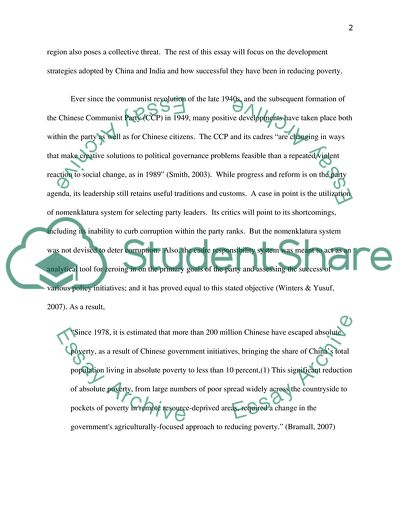Cite this document
(The Development Strategies of India and China Essay, n.d.)
The Development Strategies of India and China Essay. https://studentshare.org/macro-microeconomics/1737487-compare-the-development-strategies-of-india-and-china-in-recent-decades-and-discuss-how-these-different-development-strategies-have-resulted-in-different-rates-of-poverty-reduction
The Development Strategies of India and China Essay. https://studentshare.org/macro-microeconomics/1737487-compare-the-development-strategies-of-india-and-china-in-recent-decades-and-discuss-how-these-different-development-strategies-have-resulted-in-different-rates-of-poverty-reduction
(The Development Strategies of India and China Essay)
The Development Strategies of India and China Essay. https://studentshare.org/macro-microeconomics/1737487-compare-the-development-strategies-of-india-and-china-in-recent-decades-and-discuss-how-these-different-development-strategies-have-resulted-in-different-rates-of-poverty-reduction.
The Development Strategies of India and China Essay. https://studentshare.org/macro-microeconomics/1737487-compare-the-development-strategies-of-india-and-china-in-recent-decades-and-discuss-how-these-different-development-strategies-have-resulted-in-different-rates-of-poverty-reduction.
“The Development Strategies of India and China Essay”. https://studentshare.org/macro-microeconomics/1737487-compare-the-development-strategies-of-india-and-china-in-recent-decades-and-discuss-how-these-different-development-strategies-have-resulted-in-different-rates-of-poverty-reduction.


